Types of Material Handling Equipment
- Nandan GSE
- Blogs
Home » Types of Material Handling Equipment
Table of Contents
Are you tasked with moving goods in a warehouse, manufacturing facility, or distribution center? The right material handling equipment is crucial for smooth operations. This guide will introduce you to various types, including goods lifts and scissor lifts, each tailored for specific tasks. We’ll explore their applications, whether it’s lifting heavy loads or transporting materials. Understanding the benefits and features of each equipment type is key to making informed decisions for your business. Additionally, we’ll offer valuable maintenance and safety tips to prolong your equipment’s lifespan and ensure employee safety. Join us as we delve into the world of material handling equipment, helping you find the perfect solution for your unique operational needs. Enhance your business’s efficiency and productivity with us today!Are you tasked with moving goods in a warehouse, manufacturing facility, or distribution center? The right material handling equipment is crucial for smooth operations. This guide will introduce you to various types, including goods lifts and scissor lifts, each tailored for specific tasks. We’ll explore their applications, whether it’s lifting heavy loads or transporting materials. Understanding the benefits and features of each equipment type is key to making informed decisions for your business. Additionally, we’ll offer valuable maintenance and safety tips to prolong your equipment’s lifespan and ensure employee safety. Join us as we delve into the world of material handling equipment, helping you find the perfect solution for your unique operational needs. Enhance your business’s efficiency and productivity with us today!
Importance of Using the Right Material Handling Equipment
Choosing the right material handling equipment is crucial. It affects the efficiency, safety, and profitability of your operations. The correct equipment can boost productivity significantly. It does this by speeding up the movement of goods and reducing manual labor. It also minimizes the risk of workplace accidents and damage to goods. Additionally, the right equipment can improve space utilization in warehouses and facilities. In this section, we’ll discuss how choosing the appropriate equipment can transform your operations. This can ultimately contribute to your business’s growth and success.
Types Of Material Handling Equipment
When it comes to vertical transportation of heavy goods, a hydraulic goods lift is an indispensable piece of material handling equipment. This equipment is specifically designed to move heavy loads between different floor levels efficiently and safely. The advantages of using hydraulic goods lifts include their robustness, reliability, and the ability to handle a wide range of weights and sizes.
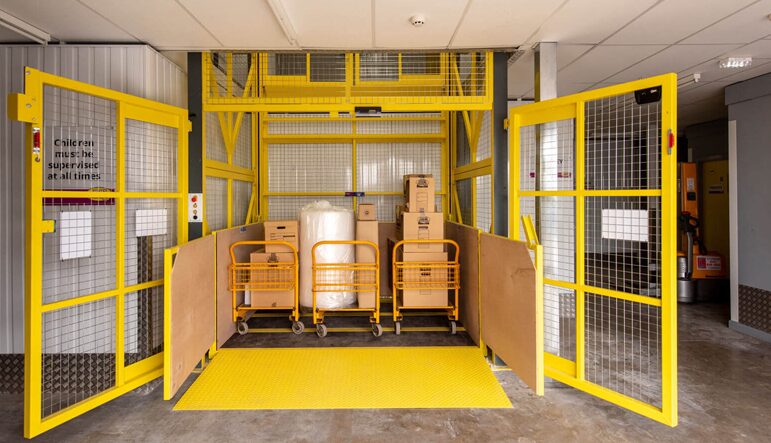
Conveyors are a cornerstone in the realm of material handling equipment, renowned for their ability to move materials efficiently from one point to another. They are versatile, can handle a variety of materials, and come in different types such as telescopic, belt, roller, and overhead conveyors.
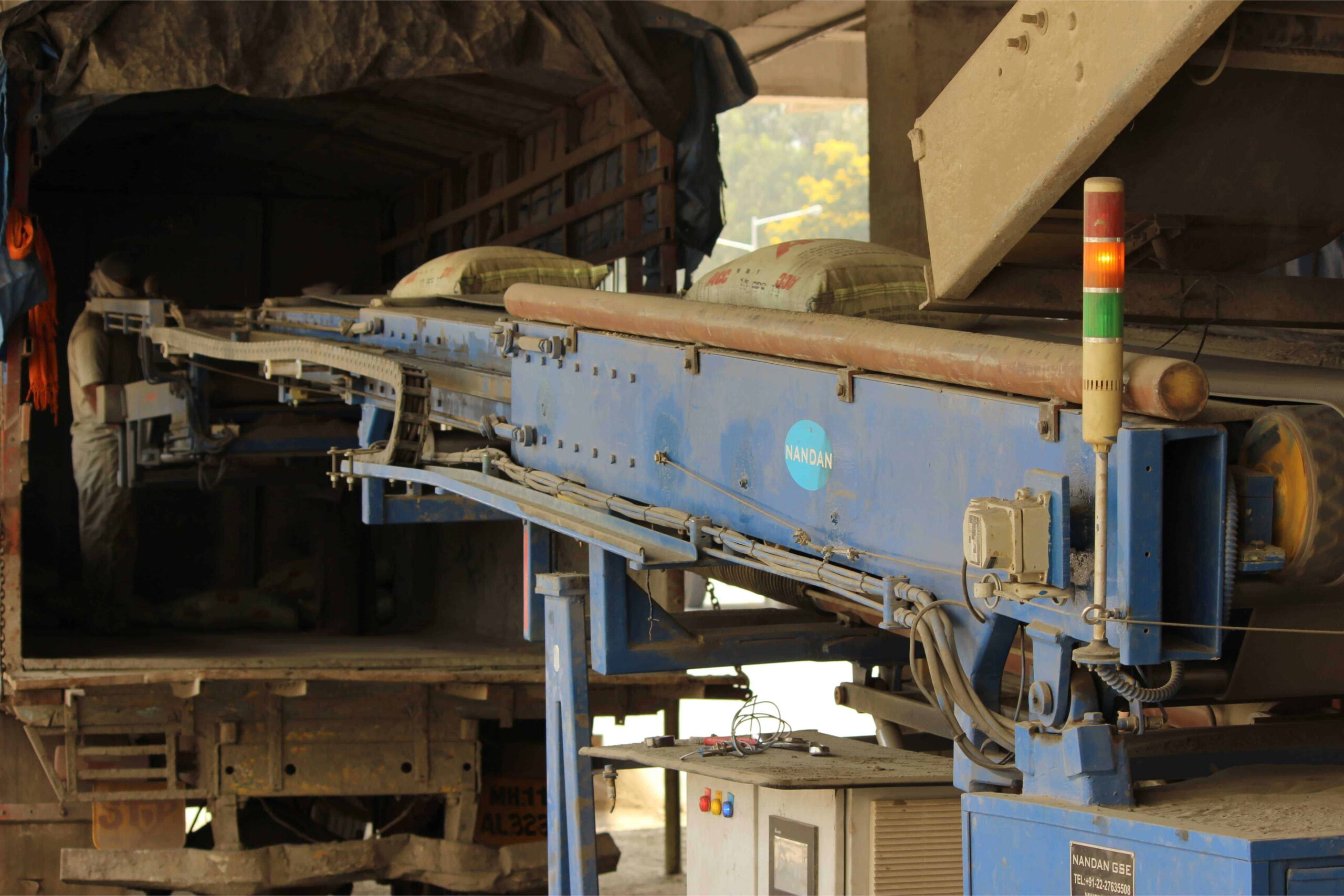
A scissor lift is a versatile type of material handling equipment designed for lifting goods and personnel to various heights. Characterized by its crisscrossing metal supports, which extend and compress like a scissor, it offers a stable platform for operations at elevated levels. Ideal for indoor and outdoor tasks, scissor lifts are commonly used in construction, warehouse management, and maintenance work. They come in various sizes and power types, including electric and hydraulic models, catering to different weight capacities and height requirements. Scissor lifts enhance safety and efficiency in environments where vertical mobility is essential.
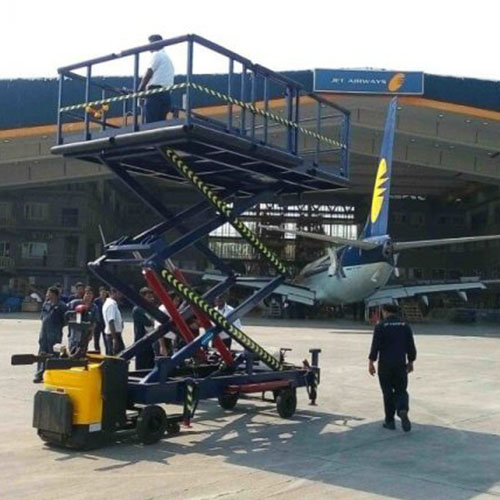
A Truck Mounted Crane effectively combines the mobility of a truck with the lifting power of a crane, thus making it a highly efficient piece of material handling equipment. Mounted directly on the bed of a truck, this crane is particularly ideal for tasks that necessitate both transportation and lifting of heavy objects, such as those found in construction sites or during the loading and unloading of heavy cargo. Moreover, the key advantage of a Truck Mounted Crane is its versatility and ease of movement, allowing it to access various locations swiftly with minimal setup time. Furthermore, they vary in lifting capacity and reach, ensuring there is a model suitable for a diverse range of applications.
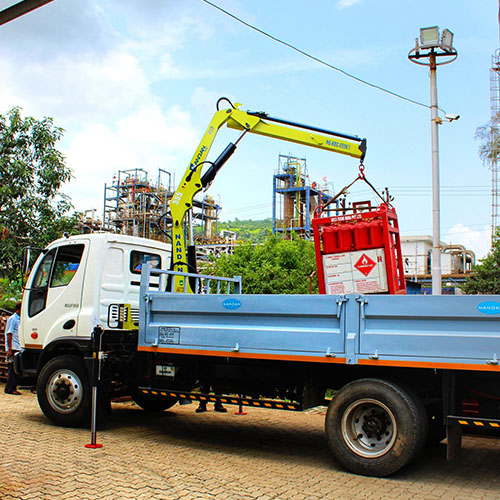
Automated Guided Vehicles (AGVs) represent a leap forward in material handling equipment technology. These self-guided vehicles are designed to transport materials around a facility without human intervention, thereby increasing efficiency and reducing labor costs.
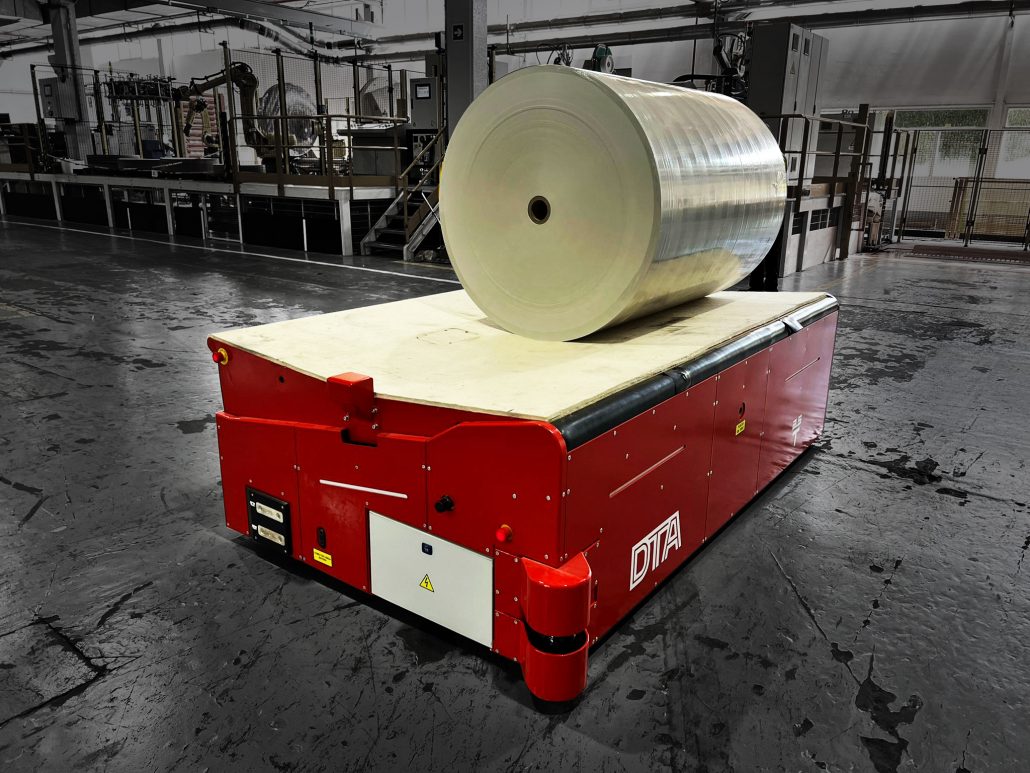
Hydraulic Tail Lift is a robust, mechanically advanced platform. It is attached to the rear of trucks and vans. Its design facilitates the loading and unloading of goods. These lifts are powered by hydraulic systems. They provide a seamless transition of cargo between the ground and the vehicle bed. This significantly reduces manual effort and enhances safety. They are especially beneficial for handling heavy or bulky items. This makes them indispensable in logistics, delivery services, and warehousing. Hydraulic tail lifts come in various load capacities and platform sizes. They cater to diverse transportation needs. This improves operational efficiency and reduces the risk of injury during cargo handling.
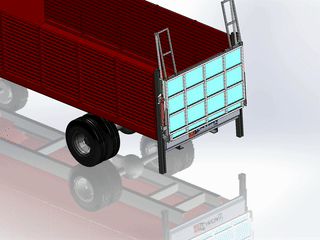
Choosing the Right Material Handling Equipment for Your Business
Selecting the appropriate material handling equipment for your business is not a one-size-fits-all process. It requires a thorough understanding of your operational needs, the types of materials you handle, and the specific challenges of your environment. Get in touch with our sales team at [email protected] and they’ll help you select the right equipment for your business needs.
Conclusion
In conclusion, the right material handling equipment is vital for the smooth functioning and growth of your business. Each type of equipment discussed in this guide offers unique benefits and is suited for specific tasks. By understanding the various options and choosing wisely, you can ensure efficient operations, safety for your employees, and a significant return on investment. Remember, the key to maximizing productivity and efficiency lies in selecting the right equipment for your specific needs.